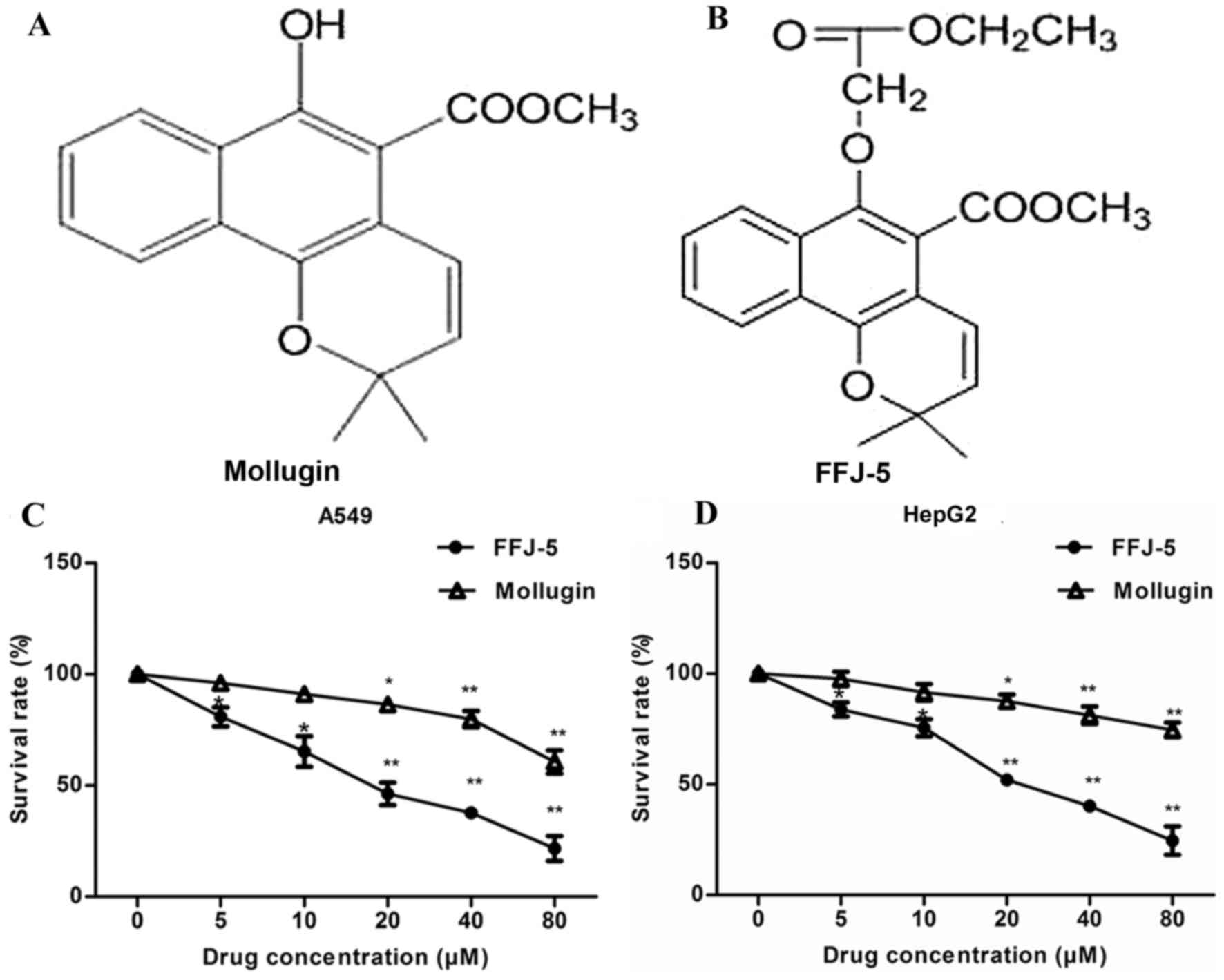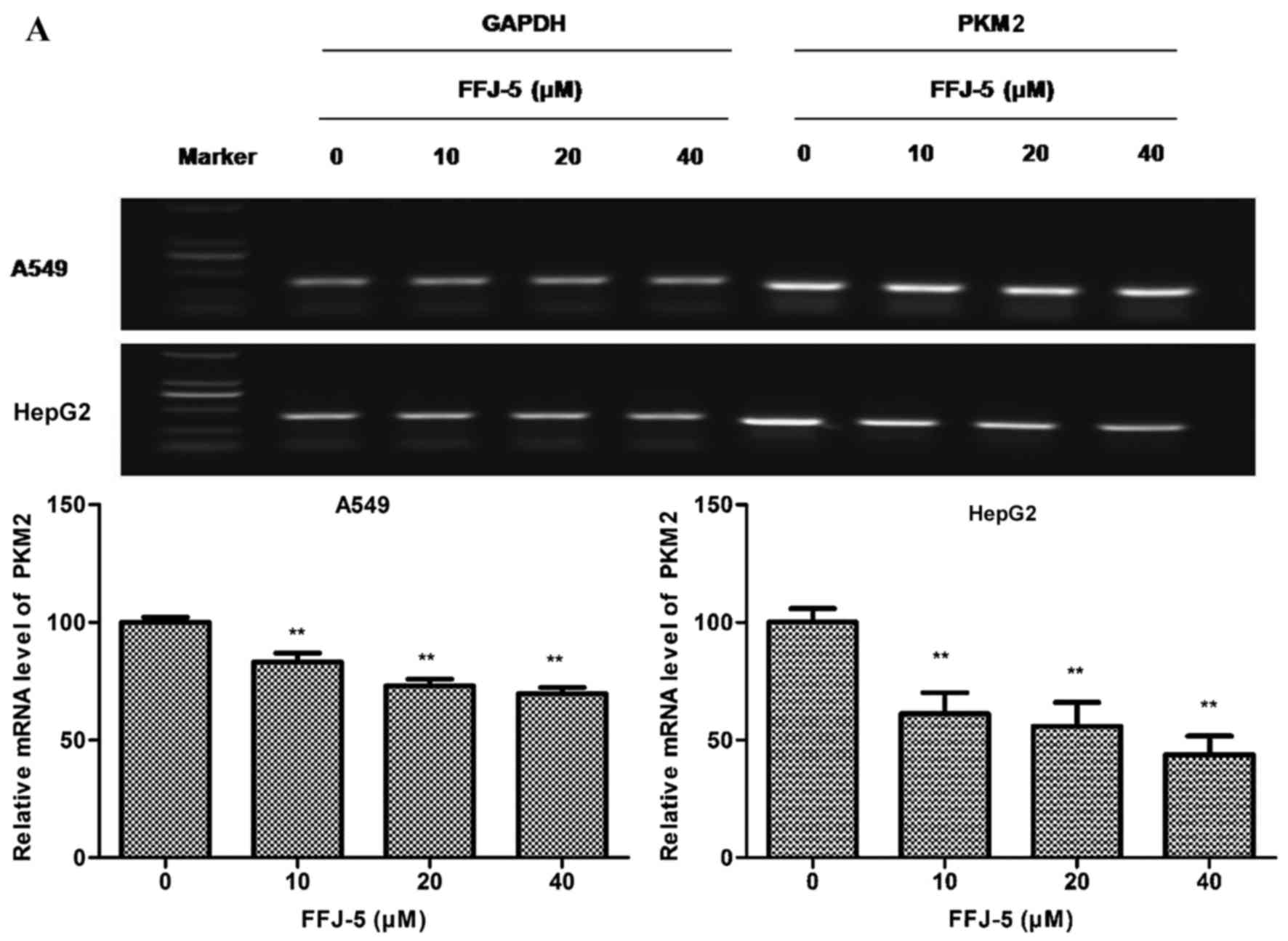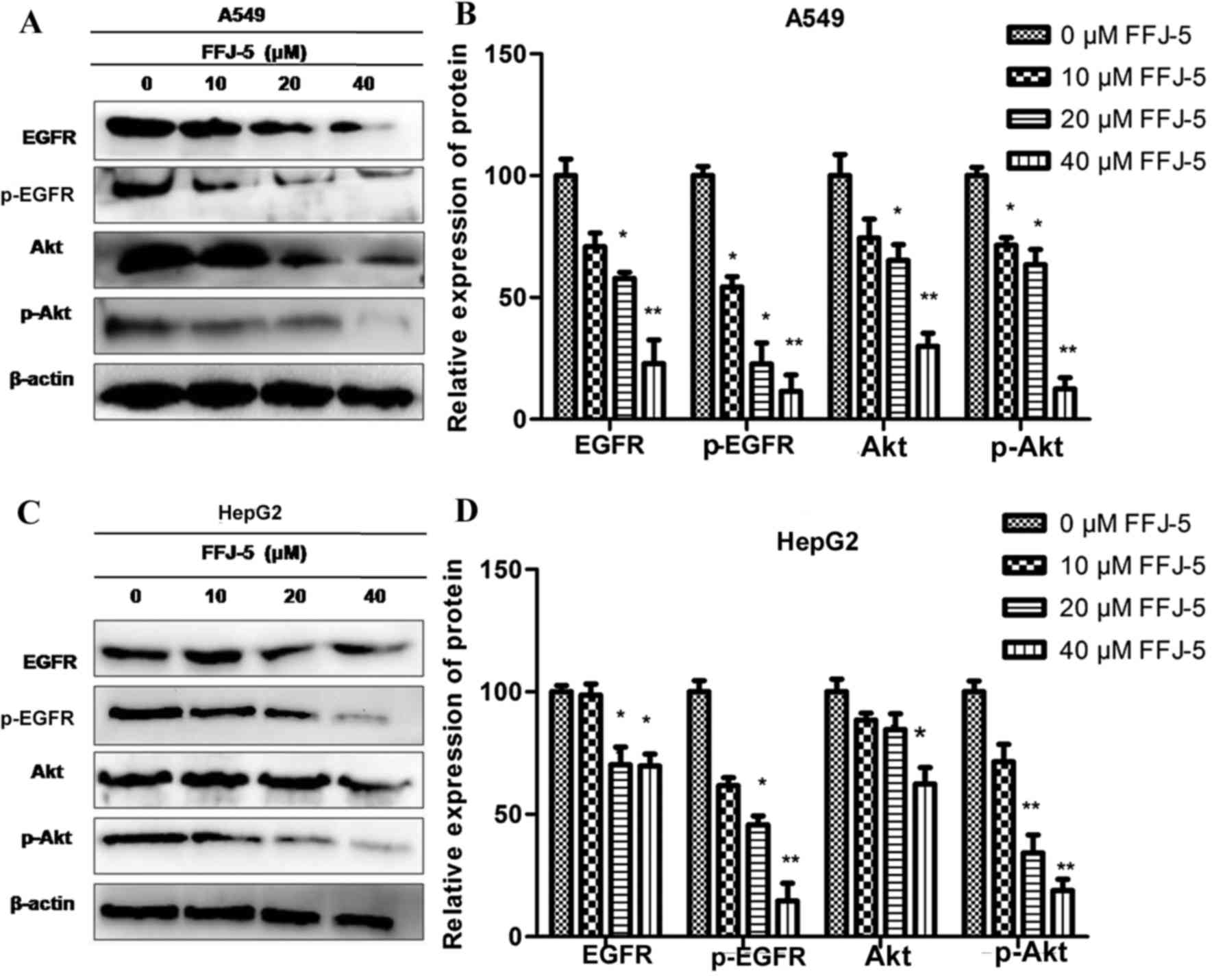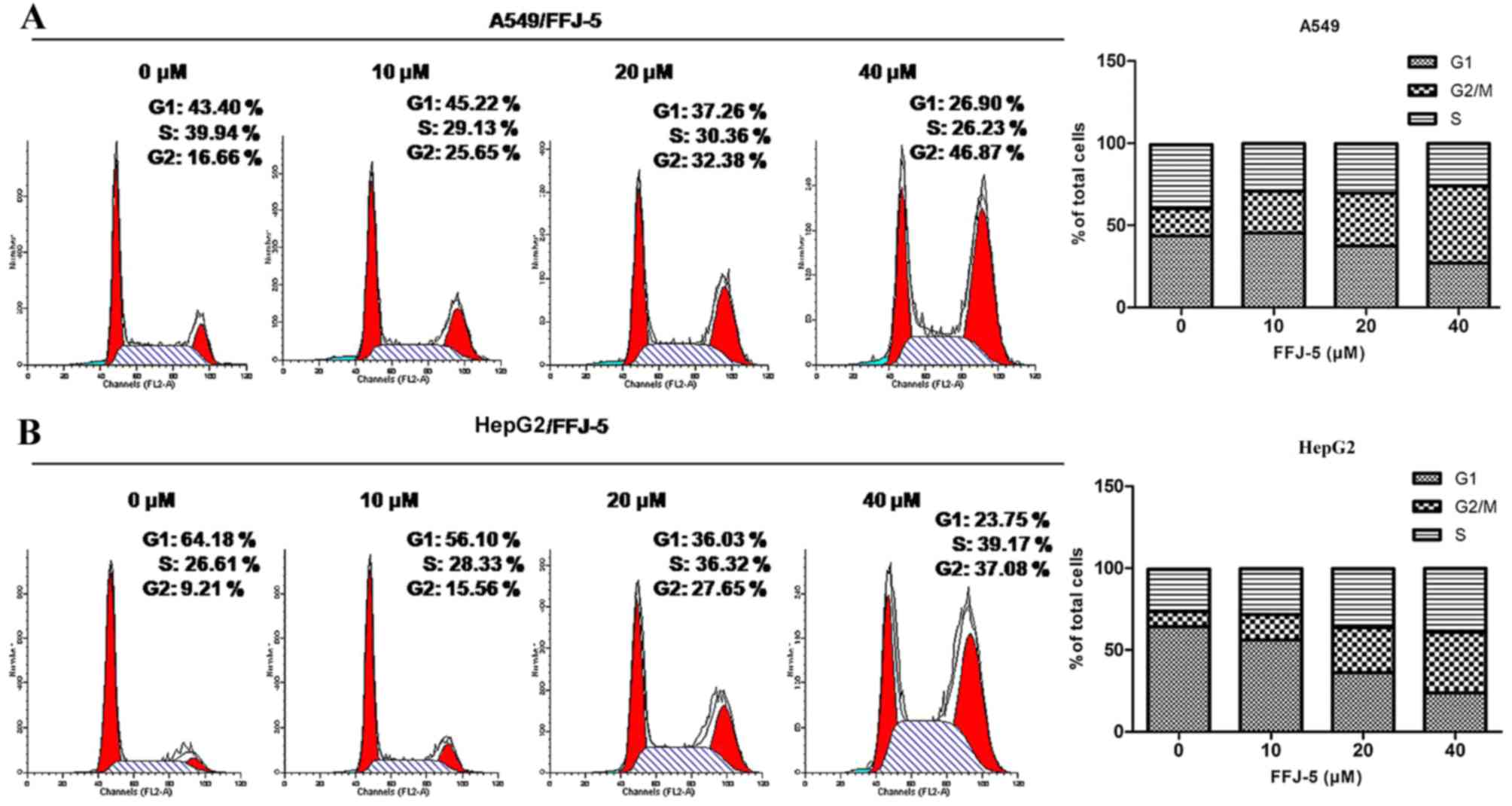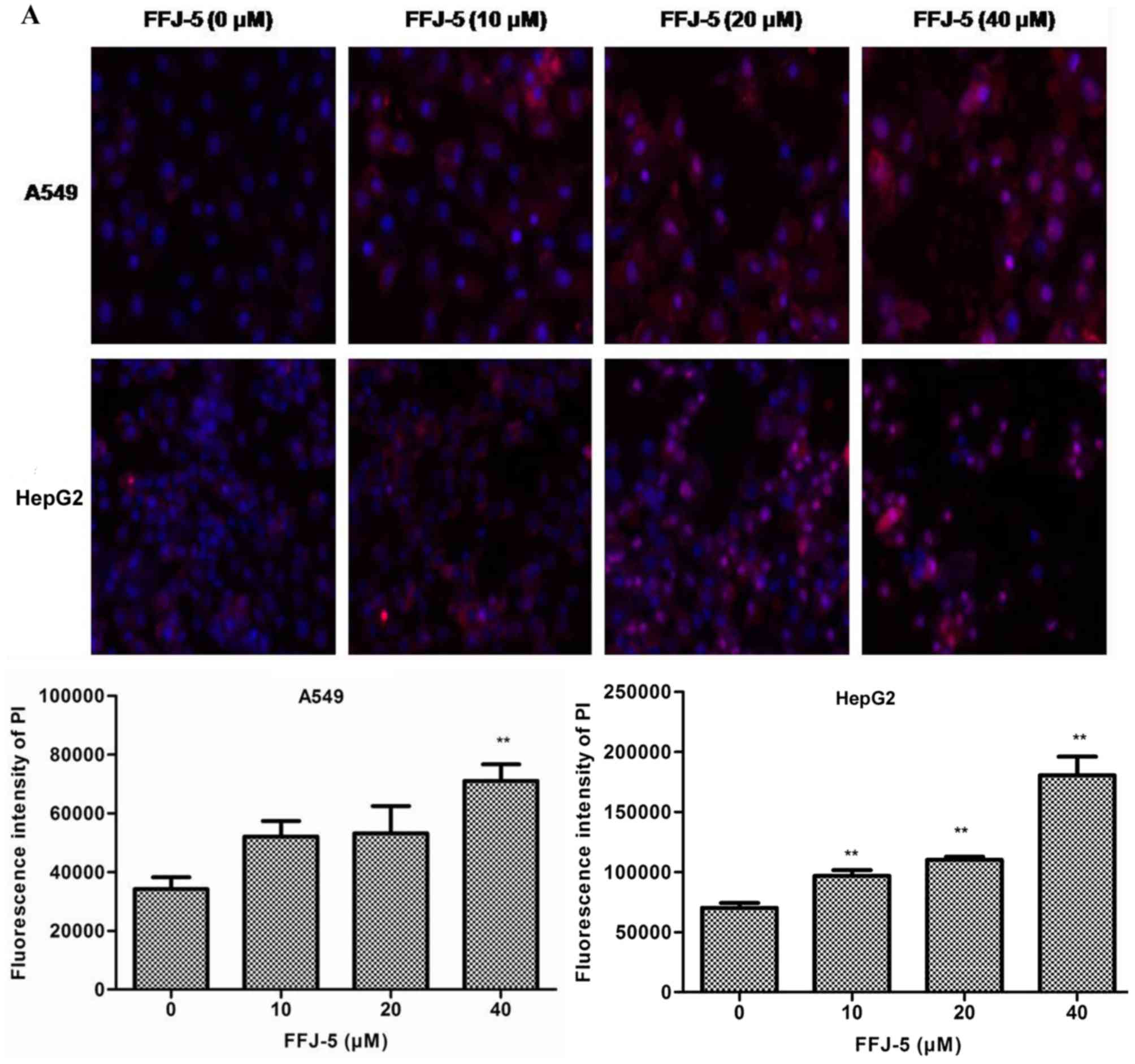|
1
|
Shilpa PN, Venkatabalasubramanian S and
Devaraj SN: Ameliorative effect of methanol extract of Rubia
cordifolia in N-nitrosodiethylamine-induced hepatocellular
carcinoma. Pharm Biol. 50:376–383. 2012. View Article : Google Scholar : PubMed/NCBI
|
|
2
|
Zhang L, Wang H, Zhu J, Xu J and Ding K:
Mollugin induces tumor cell apoptosis and autophagy via the
PI3K/AKT/mTOR/p70S6K and ERK signaling pathways. Biochem Biophys
Res Commun. 450:247–254. 2014. View Article : Google Scholar : PubMed/NCBI
|
|
3
|
Warburg O: On respiratory impairment in
cancer cells. Science. 124:269–270. 1956.PubMed/NCBI
|
|
4
|
Cairns RA: Drivers of the Warburg
phenotype. Cancer J. 21:56–61. 2015. View Article : Google Scholar : PubMed/NCBI
|
|
5
|
Warburg O: On the origin of cancer cells.
Science. 123:309–314. 1956. View Article : Google Scholar : PubMed/NCBI
|
|
6
|
Koppenol WH, Bounds PL and Dang CV: Otto
Warburg's contributions to current concepts of cancer metabolism.
Nat Rev Cancer. 11:325–337. 2011. View
Article : Google Scholar : PubMed/NCBI
|
|
7
|
Wu H, Li Z, Wang Y, Yang P, Li Z, Li H and
Wu C: MiR-106b-mediated Mfn2 suppression is critical for PKM2
induced mitochondrial fusion. Am J Cancer Res. 6:2221–2234.
2016.PubMed/NCBI
|
|
8
|
Warner SL, Carpenter KJ and Bearss DJ:
Activators of PKM2 in cancer metabolism. Future Med Chem.
6:1167–1178. 2014. View Article : Google Scholar : PubMed/NCBI
|
|
9
|
Iqbal MA, Gupta V, Gopinath P, Mazurek S
and Bamezai RN: Pyruvate kinase M2 and cancer: An updated
assessment. FEBS Lett. 588:2685–2692. 2014. View Article : Google Scholar : PubMed/NCBI
|
|
10
|
Chu B, Wang J, Wang Y and Yang G:
Knockdown of PKM2 induces apoptosis and autophagy in human A549
alveolar adenocarcinoma cells. Mol Med Rep. 12:4358–4363.
2015.PubMed/NCBI
|
|
11
|
Fendri A, Kontos CK, Khabir A,
MokdadGargouri R, Ardavanis A and Scorilas A: Quantitative analysis
of BCL2 mRNA expression in nasopharyngeal carcinoma: An unfavorable
and independent prognostic factor. Tumour Biol. 31:391–399. 2010.
View Article : Google Scholar : PubMed/NCBI
|
|
12
|
Chen M, Zou X, Luo H, Cao J, Zhang X,
Zhang B and Liu W: Effects and mechanisms of proton pump inhibitors
as a novel chemosensitizer on human gastric adenocarcinoma
(SGC7901) cells. Cell Biol Int. 33:1008–1019. 2009. View Article : Google Scholar : PubMed/NCBI
|
|
13
|
Ren J, Cheng H, Xin WQ, Chen X and Hu K:
Induction of apoptosis by 7-piperazinethylchrysin in HCT-116 human
colon cancer cells. Oncol Rep. 28:1719–1726. 2012.PubMed/NCBI
|
|
14
|
Chen J, Jiang Z, Wang B, Wang Y and Hu X:
Vitamin K(3) and K(5) are inhibitors of tumor pyruvate kinase M2.
Cancer Lett. 316:204–210. 2012. View Article : Google Scholar : PubMed/NCBI
|
|
15
|
Yang W, Xia Y, Cao Y, Zheng Y, Bu W, Zhang
L, You MJ, Koh MY, Cote G, Aldape K, et al: EGFR-induced and PKCε
monoubiquitylation-dependent NF-κB activation upregulates PKM2
expression and promotes tumorigenesis. Mol Cell. 48:771–784. 2012.
View Article : Google Scholar : PubMed/NCBI
|
|
16
|
Fan FT, Shen CS, Tao L, Tian C, Liu ZG,
Zhu ZJ, Liu YP, Pei CS, Wu HY, Zhang L, et al: PKM2 regulates
hepatocellular carcinoma cell epithelial-mesenchymal transition and
migration upon EGFR activation. Asian Pac J Cancer Prev.
15:1961–1970. 2014. View Article : Google Scholar : PubMed/NCBI
|
|
17
|
Jiang Y, Li X, Yang W, Hawke DH, Zheng Y,
Xia Y, Aldape K, Wei C, Guo F, Chen Y and Lu Z: PKM2 regulates
chromosome segregation and mitosis progression of tumor cells. Mol
Cell. 53:75–87. 2014. View Article : Google Scholar : PubMed/NCBI
|
|
18
|
Flint TR, Janowitz T, Connell CM, Roberts
EW, Denton AE, Coll AP, Jodrell DI and Fearon DT: Tumor-induced
IL-6 reprograms host metabolism to suppress anti-tumor immunity.
Cell Metab. 24:672–684. 2016. View Article : Google Scholar : PubMed/NCBI
|
|
19
|
Warburg O, Wind F and Negelein E: The
metabolism of tumors in the body. J Gen Physiol. 8:519–530. 1927.
View Article : Google Scholar : PubMed/NCBI
|
|
20
|
Gao JL and Chen YG: Natural compounds
regulate glycolysis in hypoxic tumor microenvironment. Biomed Res
Int. 2015:3541432015. View Article : Google Scholar : PubMed/NCBI
|
|
21
|
Li C, Zhao Z, Zhou Z and Liu R: PKM2
promotes cell survival and invasion under metabolic stress by
enhancing warburg effect in pancreatic ductal adenocarcinoma. Dig
Dis Sci. 61:767–773. 2016. View Article : Google Scholar : PubMed/NCBI
|
|
22
|
Justus CR, Sanderlin EJ and Yang LV:
Molecular connections between cancer cell metabolism and the tumor
microenvironment. Int J Mol Sci. 16:11055–11086. 2015. View Article : Google Scholar : PubMed/NCBI
|
|
23
|
Fan SH, Wang YY, Wu ZY, Zhang ZF, Lu J, Li
MQ, Shan Q, Wu DM, Sun CH, Hu B and Zheng YL: AGPAT9 suppresses
cell growth, invasion and metastasis by counteracting acidic tumor
microenvironmentthrough KLF4/LASS2/V-ATPase signaling pathway in
breast cancer. Oncotarget. 6:18406–18417. 2015. View Article : Google Scholar : PubMed/NCBI
|
|
24
|
Zheng J: Energy metabolism of cancer:
Glycolysis versus oxidative phosphorylation (Review). Oncol Lett.
4:1151–1157. 2012.PubMed/NCBI
|
|
25
|
Tan X, Ye H, Yang K, Chen D and Tang H:
Circadian rhythm variation of the clock genes Per1 and cell cycle
related genes in different stages of carcinogenesis of buccal
mucosa in animal model. Zhonghua Kou Qiang Yi Xue Za Zhi.
50:392–398. 2015.(In Chinese). PubMed/NCBI
|
|
26
|
Zheng L, Roeder RG and Luo Y: S phase
activation of the histone H2B promoter by OCA-S, a coactivator
complex that contains GAPDH as a key component. Cell. 114:255–266.
2003. View Article : Google Scholar : PubMed/NCBI
|
|
27
|
Lee KM, Nam K, Oh S, Lim J, Lee T and Shin
I: ECM1 promotes the Warburg effect through EGF-mediated activation
of PKM2. Cell Signal. 27:228–235. 2015. View Article : Google Scholar : PubMed/NCBI
|
|
28
|
Papadaki C, Sfakianaki M, Lagoudaki E,
Giagkas G, Ioannidis G, Trypaki M, Tsakalaki E, Voutsina A,
Koutsopoulos A, Mavroudis D, et al: PKM2 as a biomarker for
chemosensitivity to front-line platinum-based chemotherapy in
patients with metastatic non-small-cell lung cancer. Br J Cancer.
111:1757–1764. 2014. View Article : Google Scholar : PubMed/NCBI
|
|
29
|
Chen Z, Wang Z, Guo W, Zhang Z, Zhao F,
Zhao Y, Jia D, Ding J, Wang H, Yao M, et al: TRIM35 interacts with
pyruvate kinase isoform M2 to suppress the Warburg effect and
tumorigenicity in hepatocellular carcinoma. Oncogene. 34:3946–3956.
2015. View Article : Google Scholar : PubMed/NCBI
|



